From BlackWhite magazine - issue 02, feature
Designers discuss the trends that their restaurant, café and bar clients are voracious for.
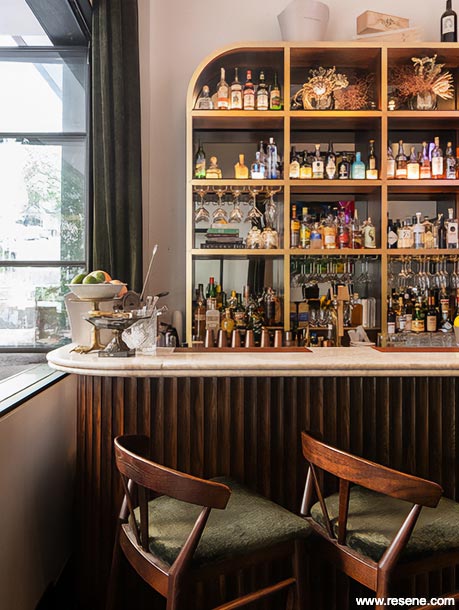
Little Culprit bar and restaurant features walls and ceiling in Resene Merino.
There is an adage among chefs that ‘the eyes are the first to feast'. While the saying refers to how a dish is presented on a plate, the same mentality can – and should – be applied to the restaurant atmosphere itself.
Restaurant designers play one of the biggest roles in orchestrating the elements of that sensory experience beyond the nose and tastebuds, but the goal post has moved. There are new priorities today that previously weren't even on the table. Now, the ability to comply with new regulations also plays a pivotal role in the sustainability of the business – and they demand that we have to find smarter ways to use our floorplates. Today's dining spaces need to allow for socialising safely in a way that takes into account all occupants – chefs, servers, deliverers, management and patrons – under the typical constraints of space and budget, while also trying to avoid the fact that any design change that occurs after a project has wrapped often ends up looking like precisely that: an afterthought.
We examine some of the hottest hospitality design and colour trends under the lens of the major effects the past year has had on restaurants, cafes and bars and look at some predictions for significant shifts that architectural and interior design experts foresee going forward.
Social media is now one of the primary places that prospective clientele first find out about new restaurants. For many food and beverage operators, the popularity of these platforms has translated into a desire to make every angle as ‘Instagrammable' as possible. But social savvy design isn't merely about vanity; it's also about telling a story.
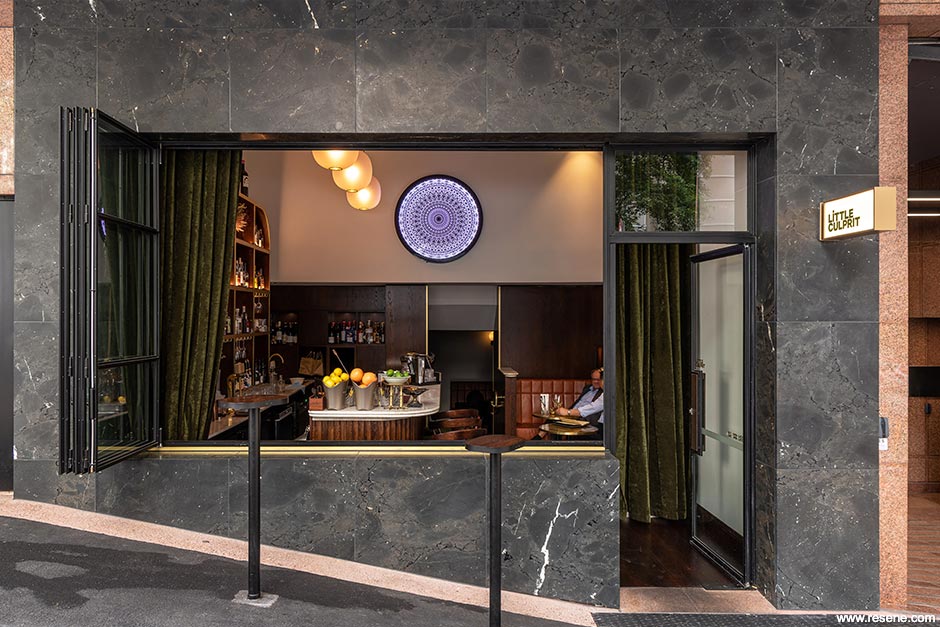
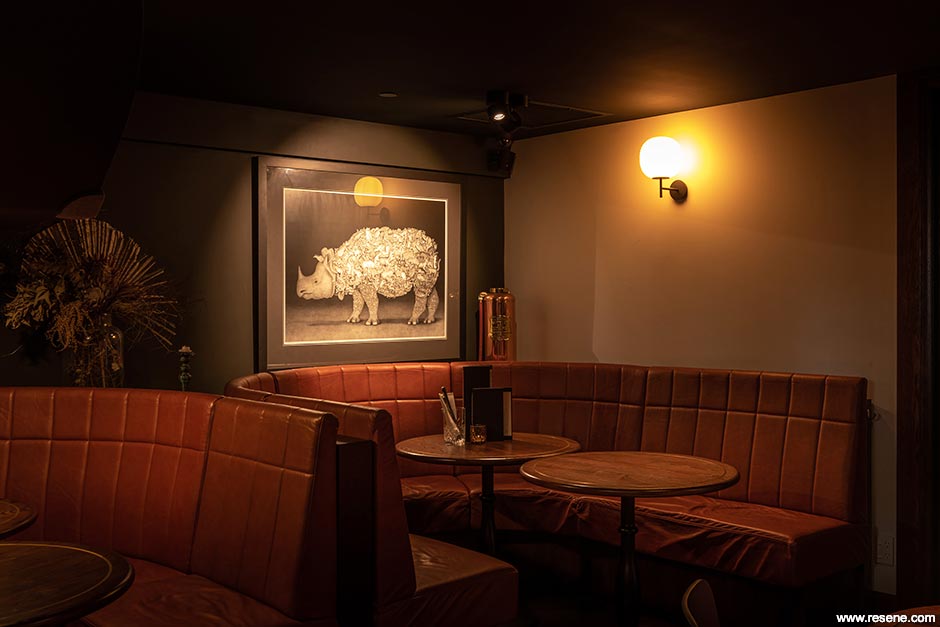
Buster Caldwell and his design team at Wonder Group are well versed at doing just that: translating a brand's story across multiple brick-and-mortar locations for homegrown heroes like Burger Burger and Duck Island Ice Cream. Their designs are cognisant of not just what those brands are about, but also use creativity to make spaces about the customers and local community.
“As well as delivering an experience, hospitality venues have returned to being social anchors that, from a customer's point of view, communicate who we are and what we think of ourselves. To build relevance, there's a real drive to create a sense of culture, fellowship and community within hospitality ventures, perhaps as an evolution of the neighbourhood local,” he says.
In the case of their design for Burger Burger's Christchurch location, rallying the community was a primary goal with Wonder Group's concept. Buster and his team invited 25 local up-and-coming artists to participate in the interior fit-out decoration by commissioning bespoke artworks using Resene testpots that became feature wall cladding. While it proved to be one of the project's major challenges, it was also a major marker of its success and well worth the effort.
Top tips: If you can't find the exact colour to suit your client's branding in Resene's extensive offerings, ask your local Resene ColorShop to create a custom colour for you. Name it after your client so that it's easy to request it again for touch-ups or future locations.
Give mixed seating and tables a unified look by painting them the same colour while simultaneously tying them into your client's branding. Use Resene Lustacryl for a durable semi-gloss painted finish on furniture or Resene Enamacryl for a gloss finish. Or opt for a shabby chic style using matte Karen Walker Chalk Colour paints and waxes from Resene ColorShops.
While the act in and of itself may be one of survival and self-sustenance, eating has always represented so much more than that. It's a ritual steeped in societal, cultural, historical, religious and familial traditions – and one that's far better shared than done alone.
Before the pandemic hit, communal dining was a booming trend. Restaurateurs loved it for their ability to maximise the number of seats available – and thus their bottom line – but recent challenges and the requirements surrounding social distancing have made condensing customers less feasible. While a massive, gorgeous custom-built communal dining table paired with benches spanning its length can make a stylish impact, venues need to incorporate practical, flexible seating and table solutions. A design that provides more options for moving and manipulating tables and seating to support a range of different configurations will give food and beverage operators more options and maximise their ability to host different types of parties and events.
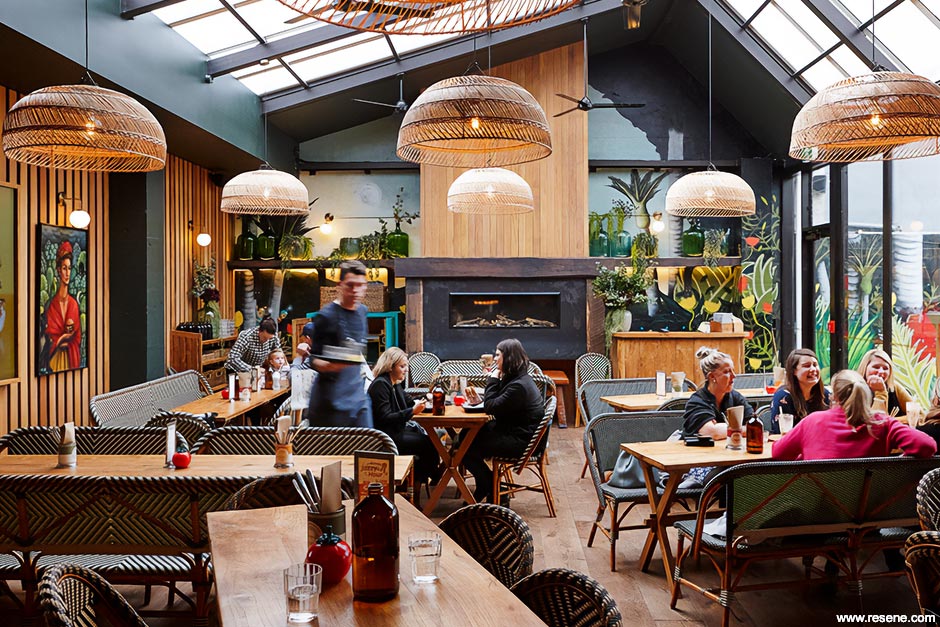
Restaurant, café and bar owners have been forced to pivot not only the way they serve their customers but, in many ways, what they serve their customers, too.
“Hospitality operators are in a rapid – and forced – phase of invention, exploring new ways to capitalise off their venture that moves away from industry norms. Examples include traditional restaurants developing off-premise liquor, pursuing partnerships and collaborations, selling meal kits, branded merch and expanding what their venues can offer,” says Buster. “I can see that with so many nuances coming into play at a business level, designers will need to find ways to get very close to the business model early on.”
Incorporating a display near the establishment's entrance or payment points for your client to have merch or product offerings on display is a smart idea, even if they haven't reached that stage of expansion yet. After all, no one has ever complained about having too much storage. Ideally, this display area should be flexible enough to expand and contract, or be covered up completely with a sliding door or curtain as required. The inclusion of plinths can be a great option, as these can be painted and repainted to make them stand out or blend in, are easy for staff to move around or reconfigure and can do double-duty for blocking off areas for events and parties or access to spots that need to be sanitised before the next seating. Plus, they add perceived value to products that are for sale by displaying them like a work of art.
Top tip: The key to a successful pop-up is making it stand out, so that it's immediately apparent when the shop is there – and when it's not. If your client is known for specific colours, go big to catch attention like painting the trims, fascia – or even the entire exterior façade from tip to toe – in one of their signature hues. The colour changes can be reverted with paint after the pop-up has wrapped.
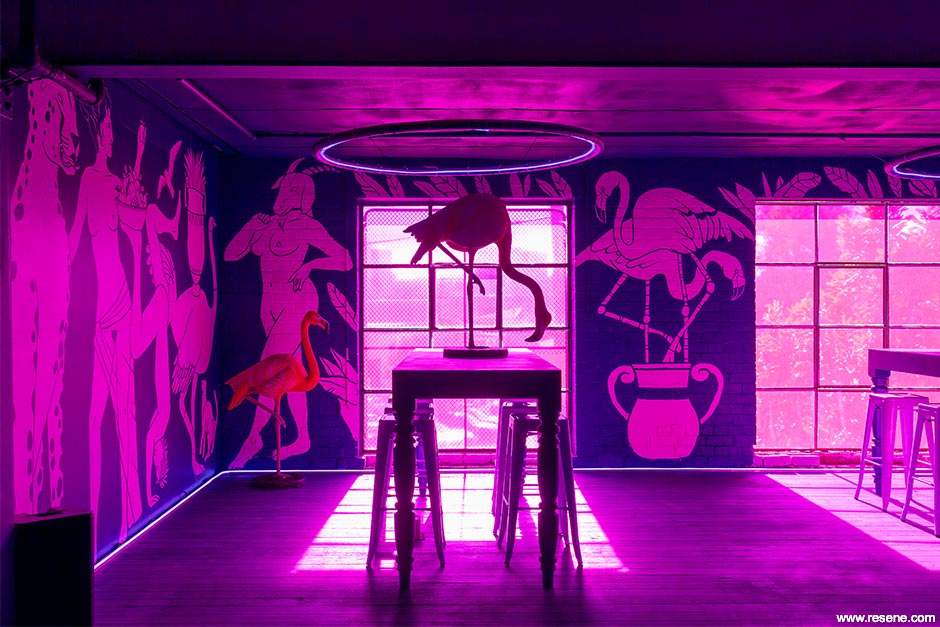
Adrian Nancekivell of Adrian Nancekivell Design (AND) forecasts more food and beverage operators switching to fast, casual pop-ups that are economical to set up. “We're working with a client who has been expanding their brick-and-mortar locations over the past couple years and now they're looking at opportunities to launch a whole slew of tiny pop-ups and also adding refilleries to their current retail locations so that customers can get bulk basics like flour, coffee, bread. Everything about it is pretty modular,” he says.
"They came up with these ideas last year during the most stringent lockdown, which just goes to show you how some people are able to see opportunity in times of crisis and downturn."
Like Wonder Group, AND's projects are very customer and business focused and stretch beyond the typical offerings of an architecture or design firm – which is a trend in and of itself. "We're working closely with clients on their business plans and how to make it work. I think we're going to see a lot more of these sorts of shifts happening," Adrian predicts.
Top tip: Most Resene testpots are made with Resene Lumbersider waterborne low sheen paint, which is robust enough for making murals inside or out without the need for additional sealing. However, if your outdoor mural features bright colours, it's smart to specify a topcoat in Resene Clearcoat UVS to give your colours extra protection from harsh UV light. Or if the restaurant is in a graffiti-prone area, finish the mural in Resene Uracryl GraffitiShield to provide protection against graffiti.
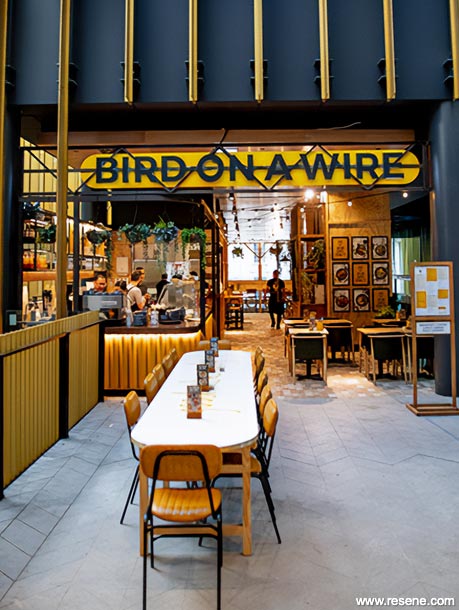
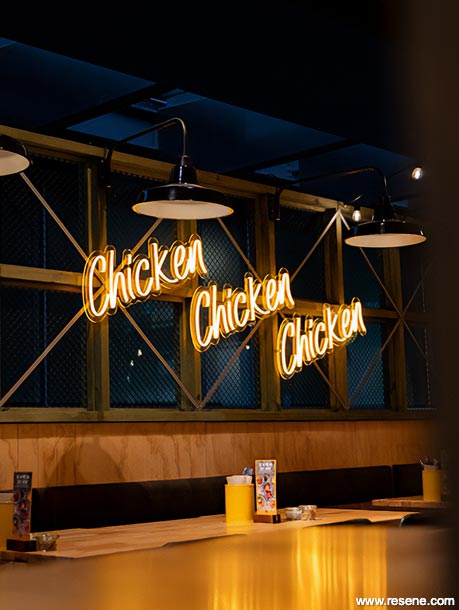
Most people love to eat outside, and not only is it a treat to eat amazing food on a lovely patio or a rooftop with great views, it may also decrease risk of transmission of airborne colds and flus for patrons and staff.
The majority of local restaurants and cafes operate in favourable climates for outdoor dining, which means making the necessary accommodations for variable weather is not only easy, it can actually add to the experience for your diners. To inject more personality into a patio, you can employ plants, umbrellas, statues and sculptures that capture the essence of the brand. Outdoor patio heaters or roaring fireplaces keep the mood – as well as the clientele – warm if you're serving up food in a cold spell.
But for spaces that don't have the ability to open outwards, restaurant designers have been busy finding beautiful ways to bring the outside in. “There is definitely a strong presence of natural materials and textures in new bars, cafes and restaurants, such as reclaimed timbers and exposed concrete paired with lots of indoor greenery intended to bring the outdoors in,” says Olivia Murray of Alt Studio Ltd.
"With that natural and raw focus coming through, there has been a shift from previously popular grey tones to the use of warm whites such as the trusted Resene Alabaster or Resene Rice Cake. These colours provide the perfect backdrop for earthy baked hues such as Resene Crail to give restaurant interiors a contemporary and cosy feel.
"I also predict we will still be seeing a lot of rich and neutral green tones providing tranquility and connecting us with nature through the use of colours such as Resene Palm Green. This method of using bold and vibrant nature-inspired tones is a great way to energise interiors without overwhelming them," she says.
Top tip: Use Resene Walk-on tinted to various hues from your client's colour scheme to create a unique flooring design that characterises the space while driving traffic flow.
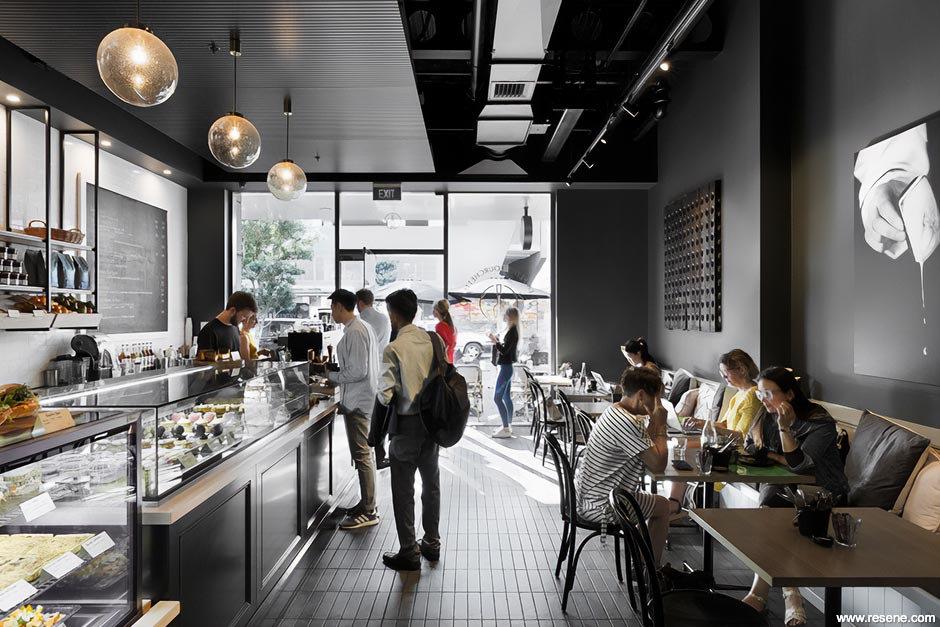
“Wall murals are becoming more and more popular, especially those with abstract and organic shapes,” says Olivia. “It's an exciting way to balance a vibrant colour palette in combination with pared back natural timbers and concrete. Pairing them with details like curved benchtops, arched doorways and smoothed wall edges are also a great touch.”
The great thing about wall murals is that they're an affordable way to make an impact thanks to their low material cost in comparison with similarly splashy features. All you need is a few pots of Resene paint to transform a wall. They're also tailormade and, thus, completely customisable with virtually endless style, shape, design and colour options. Plus, painted murals don't need to be permanent. It's much easier and economical to paint a new mural over an old one when the restaurant needs an update or changes hands than it is to remove and reinstall pricy finishes.
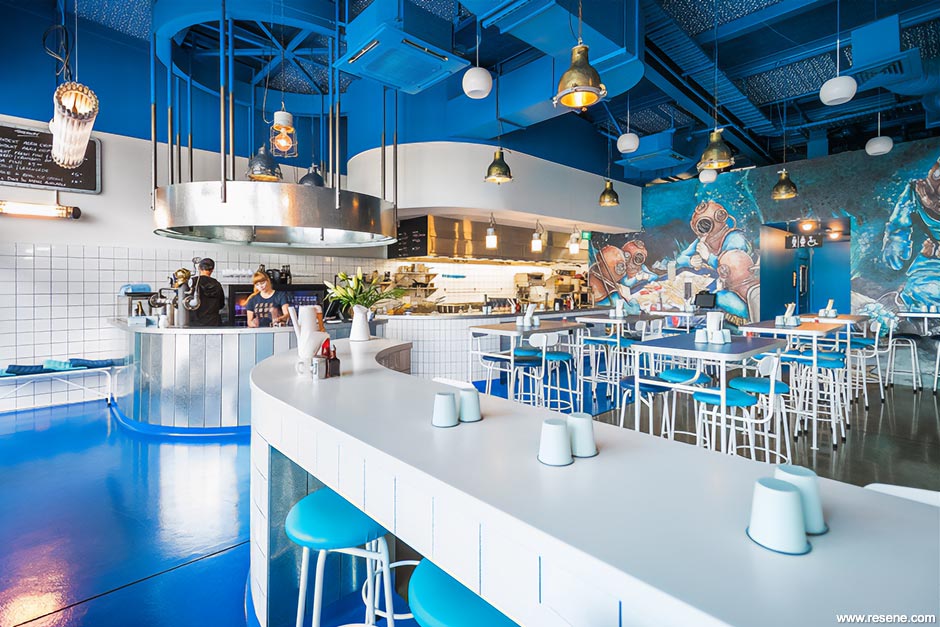
While restaurants, cafes and bars are usually relatively small spaces, applying the principles of large spaces like wayfinding offers solutions for managing traffic flow, and communicating to customers the part they play in that. Guiding lines and colour coding are some of the easiest principles to infuse into your design. Strategies like painted floor or wall markers may be incorporated to ensure customers leave adequate physical distance between one another, especially when they're waiting to be seated, pay their bill or pickup takeaway items, and help direct circulation and traffic flow to and from the entry and exit.
If guidelines need only be temporary, they can be easily painted over or repainted if the layout changes or the business switches hands. But with a bit of creativity and forward-thinking, you can work wayfinding wonders by making them an inherent part of your design. Painted patterns on walls and floors that provide strong-yet-subtle guidance can become a hero element of the overall look when planned from the start. Chairs and tables can also be painted in chosen Resene hues to designate specific dining zones.
Top tip: If your client's business is separated into two different service functions, such as eat-in and takeaway, consider painting colour coded pathways and signage to make the customer journey smoother and clearer without staff needing to explain or intervene.
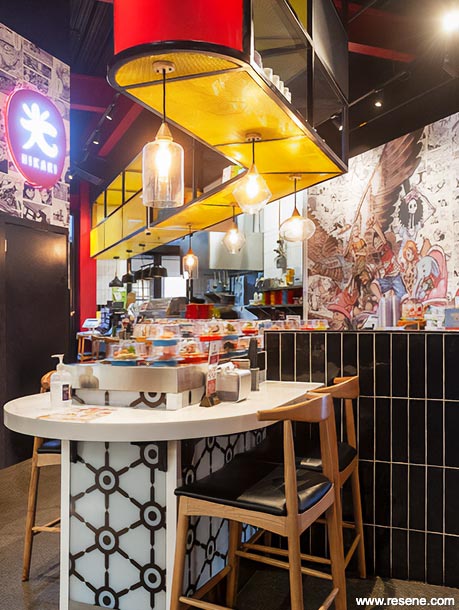
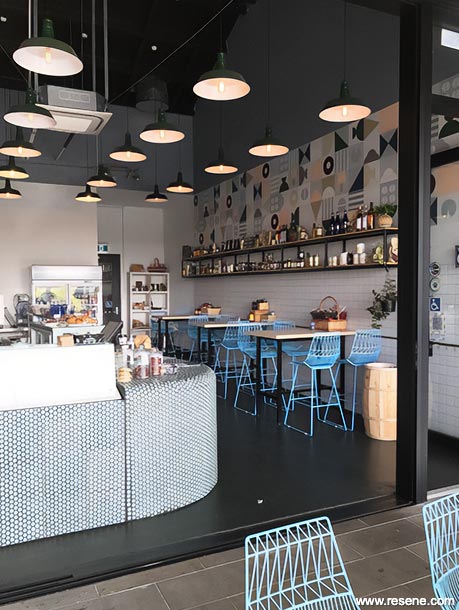
Sushi Bar: Hikari Sushi Bar in Christchurch uses bold colours to catch attention in its food court setting. Shopfront and steel beams in Resene Lustacryl semi-gloss waterborne enamel tinted to Resene Daredevil and Resene Poppy, ceiling and bulkhead in Resene SpaceCote Flat tinted to Resene Black, overhead joinery in Resene Lustacryl tinted to Resene Spotlight, door in Resene Lustacryl tinted to Resene Black and timber open shelving stained in Resene Colorwood Pitch Black. Design and image by Element17, build by Contract Construction. Cafe: A graphic designer was brought on board to help create a cohesive brand concept for Nice Café & Ice Cream, including a logo that evolved into a mural concept. The café is one of many offerings within Auckland's Long Bay Village Centre. The motifs painted on the wall in Resene Sea Fog, Resene Sanguine Brown, Resene Tangaroa, Resene Goblin, Resene Romantic and Resene Bullwhip also appear on menus and signage. Other wall areas in Resene SpaceCote Flat tinted to Resene Gull Grey and Resene Surrender, upper walls in Resene SpaceCote Flat tinted to Resene Regent Grey and floor in Resene Walk-on tinted to Resene Eternity. Design, colour selection and image by Nick Veint, mural, graphic design and colour selection by Manolo Garcia, mural painting by Mariya Sadykova.
As people get more used to ordering take-out meals and home deliveries, it can be wise to separate a restaurant's design into two zones: one area to handle takeaways and delivery and the other for serving guests that are eating in. This will add to your client's efficiency while avoiding disturbing the experience of customers that are dining in.
Planning for a holding area where take-out customers can wait for their meals in comfy chairs with a stack of magazines to pass the time will help reduce congestion. Your client can also use this designated area for delivery drivers to pick-up meals, especially if it is placed near a side door so that physical distancing can more easily be maintained when visitors aren't allowed on the premises.
As businesses shift to allow for employees to work from home more often, Adrian believes the increased demand for more local eating and drinking options will be a strong trend moving forward.
“Something else we're finding at the moment is that the suburbs are thriving, as people want to support their local, and now that more people are working from home, you're going to see more of these ‘hubs' – especially transit-oriented ones. As people start working more in satellite towns and suburbs, you're going to see more of the stuff they like from the city centres going out to where they are. We're doing some work in places like Titirangi at the moment, so there's going to be a new sort of food court there, which isn't something you typically see much of outside of CBDs or major shopping malls. So, I think that kind of spreading out is going to continue,” he says.
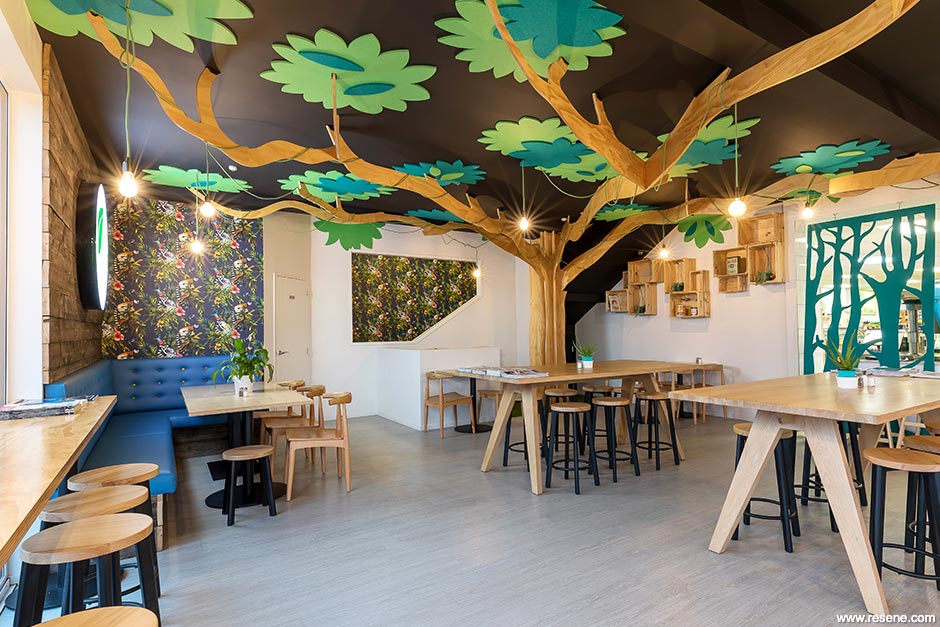
Adrian says that while there are a number of similarities between the most recent pandemic and the Global Financial Crisis, clients cutting down on overhead is among the most major.
“Companies are starting to ask whether or not they need all the space they have, and restaurants in particular have to really look to their margins to stay afloat. Food and beverage operators are looking for more affordable tenancy options. With less setup cost and less rent, their margins are going to be better – and that goes a long way if they find themselves having to clear out half of their furniture to accommodate physical distancing requirements.”
“It's a bit like snakes and ladders. The industry was going up and up and up, but then the pandemic started, and we slid right back down. After the first lockdown, everyone was pretty freaked out. But now people are picking themselves up and are more used to what needs to be done when we transition in and out of the requirements that come with the more stringent levels.”
Even if a pandemic of this magnitude is a once-in-a-lifetime event, the design lessons we can take away from it in terms of increasing the flexibility, modularity, simplicity, efficiency and flow of a restaurant, bar or café are something that, in the long run, we'll all probably be better off for doing.
“There are a lot of things that we had to have in place during the pandemic that you're not going to want to have in your restaurants all the time, but I think we need to have a good think about how we can make our designs more flexible going forward,” agrees Adrian.
Has the way you design, build or specify evolved as a result of the pandemic? Email eeditor@blackwhitemag.com and share your story.
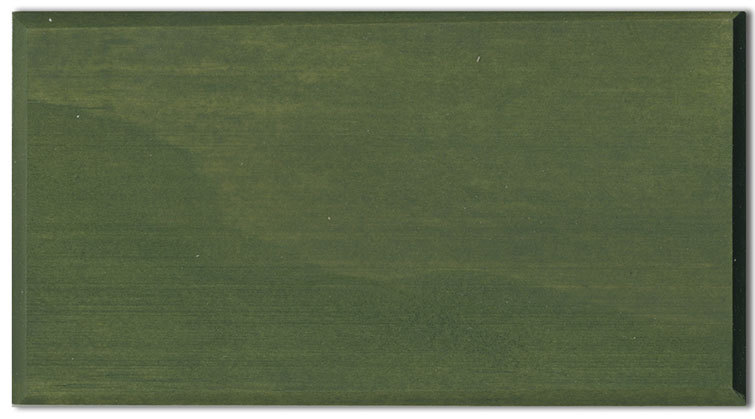
This is a magazine created for the industry, by the industry and with the industry – and a publication like this is only possible because of New Zealand and Australia's remarkably talented and loyal Resene specifiers and users.
If you have a project finished in Resene paints, wood stains or coatings, whether it is strikingly colourful, beautifully tonal, a haven of natural stained and clear finishes, wonderfully unique or anything in between, we'd love to see it and have the opportunity to showcase it. Submit your projects online or email editor@blackwhitemag.com. You're welcome to share as many projects as you would like, whenever it suits. We look forward to seeing what you've been busy creating.
Earn CPD reading this magazine – If you're a specifier, earn ADNZ or NZRAB CPD points by reading BlackWhite magazine. Once you've read an issue request your CPD points via the CPD portal for ADNZ (for NZ architectural designers) or NZRAB (for NZ architects).